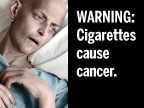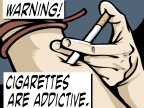November 24th, 2010 by Toni Brayer, M.D. in Better Health Network, Health Tips, News, Research
No Comments »

New clinical trials and published research are giving us information on how to improve health in elderly patients. Here are some brief points from the Cleveland Journal of Medicine that were surprising to me:
— Each year 30 percent of people age 65 or older fall and sustain serious injuries so preventing falls and fractures is important. Vitamin D prevents both falls and fractures, but mega doses of Vitamin D (50,000 mg) might cause more falls. A better dose is 1,000mg a day in people who consume a low-calcium diet.
— Exercise boosts the effect of influenza vaccine.
— The benefits of dialysis in older patients is uncertain, as it does not improve function in people over age 80. We don’t even know if it improves survival. Older patients who receive dialysis for kidney failure had a decline in function (eating, bed mobility, ambulation, toileting, hygiene, and dressing) after starting treatment.
— Colinesterase inhibitors (Aricept, Razadyne and Exelon) are commonly used to treat Alzheimer disease, but they all can have serious side effects. Syncope (fainting), hip fractures, slow heart rate, and the need for permanent pacemaker insertion were more frequent in people taking these drugs. The benefits of these drugs on cognition is modest.
— A new drug called Pradaxa (dabigatran) will likely prove to be safer than Coumadin (warfarin). Over two million adults have atrial fibrillation and the median age is 75. The blood thinner warfarin is critical for prevention of strokes but it caries a high risk of bleeding and drug levels have to be monitored frequently. Dabigatran will probably replace warfarin, but it will probably also be a lot more expensive.
As I often say, medicine and science are constantly changing and evolving. As new evidence comes forth, physicians and patients need to re-evaluate they way we do things.
*This blog post was originally published at EverythingHealth*
November 24th, 2010 by Shantanu Nundy, M.D. in Better Health Network, Health Policy, Opinion, True Stories
No Comments »

This past September, a group of medical residents at my institution began seeing primary care patients at a free clinic down the street from our tertiary academic medical center (“hospital clinic”). Far from my expectations, the care we are able to provide at our free clinic is in many ways better than our hospital clinic. Somewhat paradoxically, the experience has given me a taste of what the practice of medicine is like in single-payer healthcare systems like Canada’s.
When I volunteered to start seeing patients at a nearby free clinic, I had little idea what I was signing up for. The term “free clinic” conjured up memories as a medical student in East Baltimore tending to patients at a local homeless shelter with severe frostbite or at a student-run clinic rummaging through the storage room for anti-hypertensive medications. I expected our patients to be terribly poor, the clinic to be little more than a warehouse, for supplies and medications to be few and far between, and for the care we provided to be more about putting out fires than delivering high-quality primary care.
But the place I have come to cherish working at is none of these things. A surprising number of our patients have stable lives and regular jobs — it’s just that their jobs don’t offer health insurance (including some who work in healthcare!) Patients call for appointments. When they arrive they are triaged by a nurse who takes their vitals and asks about their chief complaint before putting them in an exam room. We provide comprehensive primary care complete with routine lab tests for cholesterol and diabetes, age appropriate vaccinations, and referrals for mammograms and colon cancer screening. Read more »
*This blog post was originally published at BeyondApples.Org*
November 24th, 2010 by DrRob in Better Health Network, Health Policy, Opinion, True Stories
No Comments »


Hey there, big, smart, good-looking doctor…
Are you tired of being snubbed at all the parties? Are you tired of those mean old specialists having all of the fun?
I have something for you, something that will make you smile. Just come to me and see what I have for you. Embrace me and I will take away all of the bad things in your life. I am what you dream about. I am what you want. I am yours if you want me…
Seduce: verb [trans.] attract (someone) to a belief or into a course of action that is inadvisable or foolhardy : they should not be seduced into thinking that their success ruled out the possibility of a relapse. See note at “tempt.”
(From the dictionary on my Mac, which I don’t know how to cite.)
If you ever go to a professional meeting for doctors, make sure you spend time on the exhibition floor. What you see there will tell you a lot about our system and why it is in the shape it is. Besides physician recruiters, EMR vendors, and drug company booths, the biggest contingent of booths is that of the ancillary service vendors.
“You can code this as CPT-XYZ and get $200 per procedure!”
“This is billable to Medicare under ICD-ABC.DE and it reimburses $300. That’s a 90 percent margin for you!”
This is an especially strong temptation for primary care doctors, as our main source of income comes from the patient visit — something that is poorly reimbursed. Just draw a few lab tests, do a few scans, do this, do that, and your income goes up dramatically. The salespeople (usually attractive women, ironically) will give a passing nod to the medical rationale for these procedures, but the pitch is made on one thing: Revenue. Read more »
*This blog post was originally published at Musings of a Distractible Mind*
November 16th, 2010 by admin in Better Health Network, Opinion, True Stories
1 Comment »

It was a straightforward phone message (names changed): “Hey Dr. S., this is Bobbie Jones, April Dixon’s granddaughter. I was calling to inform you that April passed away today at City Hospital. They said she was bleeding in her stomach or something. I’m not quite what sure what happened, but she got real sick. But she’s gone, so, thanks so much. You’ve been a real neat doctor, and it’s been good working with you through the years taking care of my grandmother. Take care. Bye.”
Bobbie Jones is a saint. Pure and simple. She took care of her 88-year-old grandmother with tender, loving care. I am certain if left to the vagaries of the “healthcare system” that her grandmother would have died at least three years ago, maybe earlier.
Ms. Jones will get no recognition. No income. No honors, save this blog post which she’ll never see. She will get a letter from me, expressing my condolences and appreciation for the love and care that she provided her grandma. She singlehandedly advocated for an octogenarian with advanced dementia and probable cancer (we were never able to get a definitive diagnosis of it) and gave her a quality of life that I would want were I in her grandma’s shoes. Read more »
*This blog post was originally published at ACP Internist*
November 14th, 2010 by DrWes in Better Health Network, Health Policy, Health Tips, Medical Art, News, Opinion
No Comments »

 The FDA will soon require new cigarette package labeling to deter smoking. So in politically-correct governmental fashion, they are asking which labels you’d like to see. (You can pick your favorites here.) My personal favorite (so far) is the one shown to the left, but its impact factor pales in comparison to this example found in England. (That, my friends, is cancer!)
The FDA will soon require new cigarette package labeling to deter smoking. So in politically-correct governmental fashion, they are asking which labels you’d like to see. (You can pick your favorites here.) My personal favorite (so far) is the one shown to the left, but its impact factor pales in comparison to this example found in England. (That, my friends, is cancer!)
 Ironically, it appears the FDA isn’t too sure how forceful it should be in these warnings about the dangers of smoking. They offer a cornucopia of milquetoast labeling options, many of which contain cartoons. Might such unrealistic portrayals defy they hard-hitting message they want to project? Worse, at least one cartoon (seen here) even seems to promote cigarettes AND drug use together!
Ironically, it appears the FDA isn’t too sure how forceful it should be in these warnings about the dangers of smoking. They offer a cornucopia of milquetoast labeling options, many of which contain cartoons. Might such unrealistic portrayals defy they hard-hitting message they want to project? Worse, at least one cartoon (seen here) even seems to promote cigarettes AND drug use together!
 In an even more astonishing example, some images almost make me what to take up smoking so I can blow big bubbles. Since I could never do this well before, maybe I should take up smoking! Seriously, is an empowerment message what the government wants to portray?
In an even more astonishing example, some images almost make me what to take up smoking so I can blow big bubbles. Since I could never do this well before, maybe I should take up smoking! Seriously, is an empowerment message what the government wants to portray?
Make these labels big, ugly, and real. Anything else is a waste of taxpayer’s money.
-WesMusings of a cardiologist and cardiac electrophysiologist.
*This blog post was originally published at Dr. Wes*



















